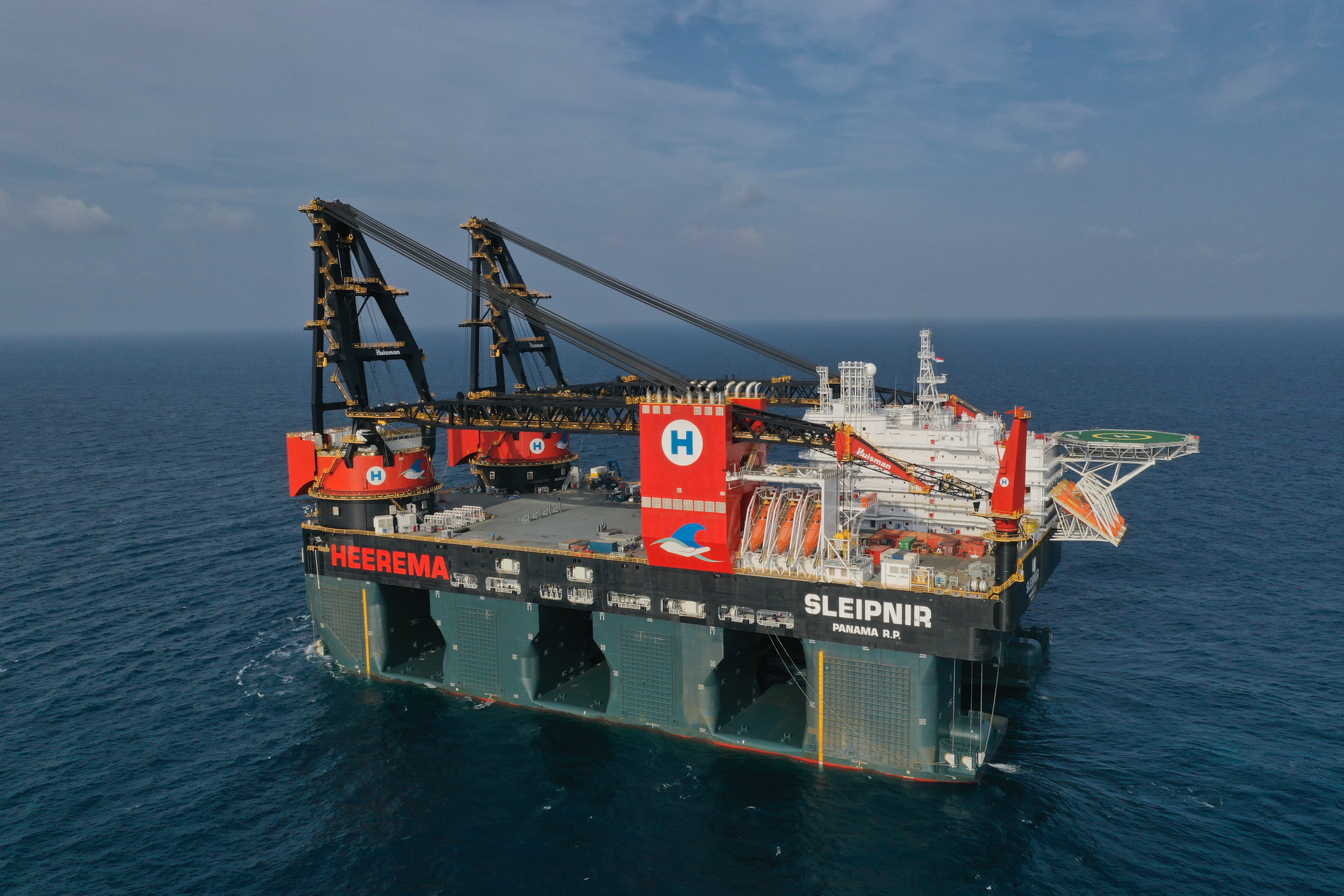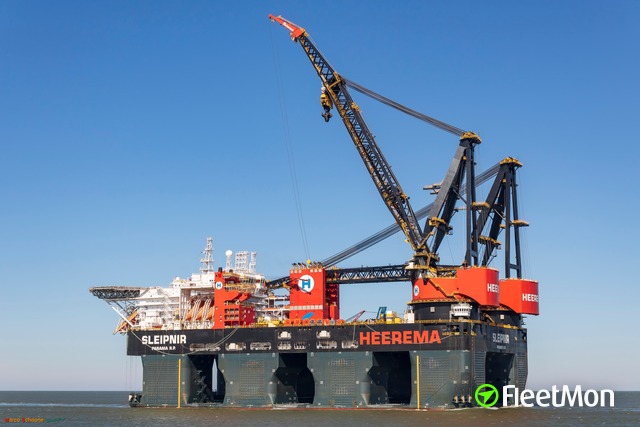

This ship is 220 metres long, 102 metres wide and it has a lifting capacity of 20,000 tonnes, enough to lift two. By using Sleipnir, Heerema is working on cleaning up retired drilling platforms in the cleanest possible way with their use of emission reducing LNG. For this, maritime researchers Peter Wellens and David Fidalgo Domingos are working with Jan-Willem van Wingerden, professor of Wind Turbine & Wind Farm Control, on a full-scale experiment on Sleipnir, world’s biggest crane vessel. The vessel arrives to prepare for future decommissioning work across the North Sea. Before the introduction of Sleipnir in 2019, Thialf was the world’s largest SSCV and had set the records to prove it In 2000, Thialf set a world record by lifting the 11,883 metric ton Shearwater topside located in the North Sea as well as the world's largest SPAR platform. Sleipnir will arrive in Rotterdam following a successful project execution in Trinidad, having already worked in Brazilian and Israeli waters.

What is especially unique about Sleipnir is that it has dual-fuel propulsion and can, therefore, run entirely on the emission-reducing fuel LNG. This ability makes it suitable for the largest offshore jobs, such as building wind turbines at sea, dismantling old platforms, or constructing the most significant offshore structures.ĭue to Sleipnir’s two large streamlined floats, the vessel can sail relatively quickly (on average 20 kph) with limited fuel consumption. The semi-submersible vessel has two cranes onboard, each capable of lifting 10 000 t.

As equally impressive as its mythical namesake, the vessel has already broken lifting records for crane vessels with a 15 300 lift in September 2019. Named after the Norse god Odin’s eight-legged stallion, the vessel stands at 220 m long, 102 m wide, can accommodate 400 employees, and weighs 119 000 t. Since then, the vessel has been busy across the globe. Sembcorp Marine, a Singaporean ship and offshore builder, completed the construction of Heerema’s Sleipnir in July 2019. The world’s largest semi-submersible crane vessel, Sleipnir, is due to arrive in the Port of Rotterdam for the first time on 21 March.


 0 kommentar(er)
0 kommentar(er)
